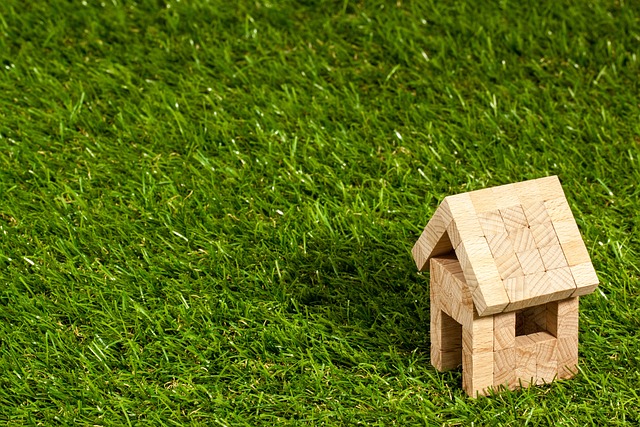Lightweight synthetic roofing materials have gained popularity due to their durability, cost-effectiveness, and ability to mimic traditional options. They simplify synthetic roof installation, offering faster and easier handling thanks to reduced weight and flexibility. These long-lasting materials withstand harsh weather, require minimal maintenance, and offer excellent value. When selecting a synthetic roof, consider climate, weather patterns, warranties, and environmental impact. Proper maintenance, including regular inspections and gentle cleaning, is crucial for prolonging the life of these roofs.
Discover the revolutionary world of lightweight, long-lasting synthetic roofing—a game-changer in the realm of home exterior solutions. This comprehensive guide explores the benefits of choosing synthetic roof installation over traditional options. From understanding the materials and their durability to maintenance tips, we’ll navigate you through every step. Learn how these roofs enhance your home’s value while offering a vibrant, low-maintenance alternative, making them a popular choice in today’s market.
- Understanding Lightweight Synthetic Roofing Materials
- Benefits of Long-Lasting Synthetic Roof Installation
- Choosing the Right Synthetic Roofing System for Your Home
- Maintenance and Care for Your Synthetic Roof
Understanding Lightweight Synthetic Roofing Materials
Lightweight synthetic roofing materials have gained significant popularity in the construction industry, especially for their remarkable ability to offer both durability and cost-effectiveness. These materials are designed to mimic the appearance of traditional roofing options while providing unique benefits that make them ideal for various applications. In terms of synthetic roof installation, these innovative products are typically made from advanced polymers or composites, ensuring they are lighter in weight compared to conventional roofing solutions.
The lightweight nature of synthetic roofs is not just an aesthetic advantage; it offers substantial advantages during the installation process. Lighter materials mean reduced strain on structural supports, making them suitable for both new constructions and retrofits. Moreover, their flexibility allows for easier handling and faster installation times, reducing labor costs and potentially speeding up project timelines. This makes synthetic roof installation a preferred choice for modern builders and homeowners seeking efficient, long-lasting, and cost-efficient roofing solutions.
Benefits of Long-Lasting Synthetic Roof Installation
The decision to install a synthetic roof offers numerous advantages for homeowners seeking a durable and low-maintenance option. Long-lasting synthetic roofing materials are designed to withstand harsh weather conditions, including intense sunlight, heavy rainfall, and extreme temperatures, ensuring your roof remains in pristine condition for years to come. This longevity not only reduces the need for frequent repairs but also provides excellent value for money.
One of the key benefits is its ease of installation. Synthetic roofs can be easily fitted over existing shingles, saving time and labour costs compared to traditional roofing methods. Their lightweight nature also makes them safer to install, reducing the risk of injury on steep rooftops. Moreover, these synthetic materials are environmentally friendly, as they are often made from recycled content and can be reused or recycled again at the end of their useful life.
Choosing the Right Synthetic Roofing System for Your Home
When considering a synthetic roofing system, it’s crucial to assess your home’s unique needs and choose a product that aligns perfectly. Factors like climate, roof pitch, and local weather patterns play a significant role in determining the most suitable option. For instance, areas prone to heavy rain may require a waterproof membrane with superior drainage capabilities, while regions experiencing extreme temperatures need roofing materials capable of resisting frost and heat damage.
A responsible approach involves researching different synthetic roof installation options available in the market. Look for products backed by robust warranties, indicating manufacturer confidence in their durability. Additionally, consider the environmental impact; some synthetic roofing solutions are designed with recyclable materials, contributing to a more sustainable future.
Maintenance and Care for Your Synthetic Roof
Proper maintenance is key to ensuring your synthetic roof remains in top condition for years to come. Unlike traditional roofing materials, synthetic roofs require minimal upkeep, making them a convenient and cost-effective choice. Regularly inspecting your roof for any signs of damage, such as missing or loose shingles, is essential. Promptly addressing these issues will prevent further complications.
When cleaning your synthetic roof, use soft brushes or vacuums to remove debris without causing wear. Avoid powerful water jets or abrasive cleaners that could damage the surface. Additionally, be mindful of tree branches or other structures overhead that might cause shadowing, as this can lead to moss growth and require specialized cleaning methods. Regular maintenance and careful care will help extend the lifespan of your synthetic roof installation.
Lightweight synthetic roofing offers a compelling blend of durability and ease. By choosing a long-lasting synthetic roof, you invest in your home’s protection while enjoying low maintenance and cost savings. When selecting a system, consider your climate, roof pitch, and aesthetic preferences. Proper care will ensure your synthetic roof maintains its beauty and integrity for years to come, making it a smart and sustainable choice for any homeowner seeking a reliable, modern solution: synthetic roof installation.
